Guitar River is reader-supported. We may earn a commission when you make a purchase using the links on our site.
Learn more.
The Electric Guitar Buyer’s Guide: Making Your Best Pick
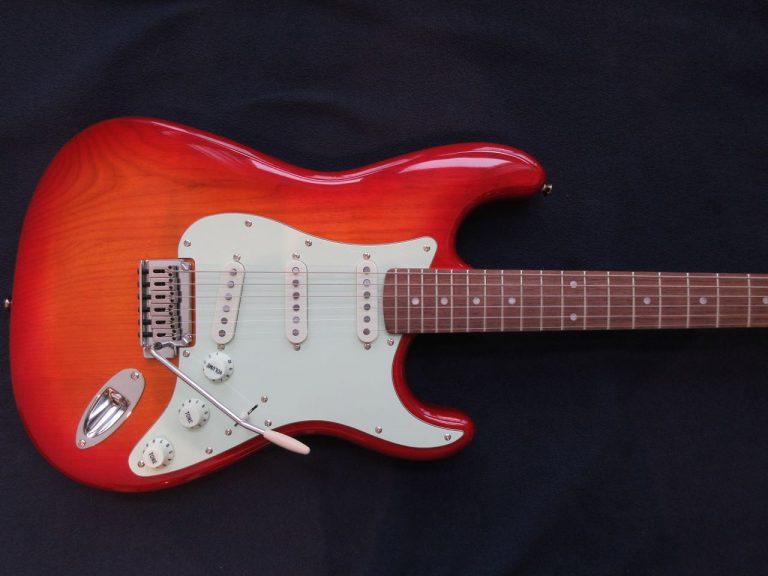
Buying your first electric guitar is a fun experience, but it can be overwhelming. Having some fundamental knowledge of the instrument will help you as you shop.
It’s easy to get bogged down in the technical details, so we’ve created this guide. There are a few essential things to know before you set out on your guitar-buying journey. Follow along, and you’ll be ready for your next guitar purchase.
If you are interested in learning about all the different parts of the electric guitar, be sure to check out our guide on electric guitar anatomy.
Guitar Style
The style of the electric guitar is not just about aesthetics. There are some reasons for the different appearances; we’ll cover the essentials.
Body Type and Shape
For the time being, we are going to concentrate on solid-body electric guitars. This is likely where you want to start your search.
You’ll see references to “single-cut,” “double-cut,” “S-style,” “T-style,” “LP-style,” and other seemingly cryptic terms. Basically, these all refer to the shape of the guitar body and the cutaway where the guitar neck meets the body.
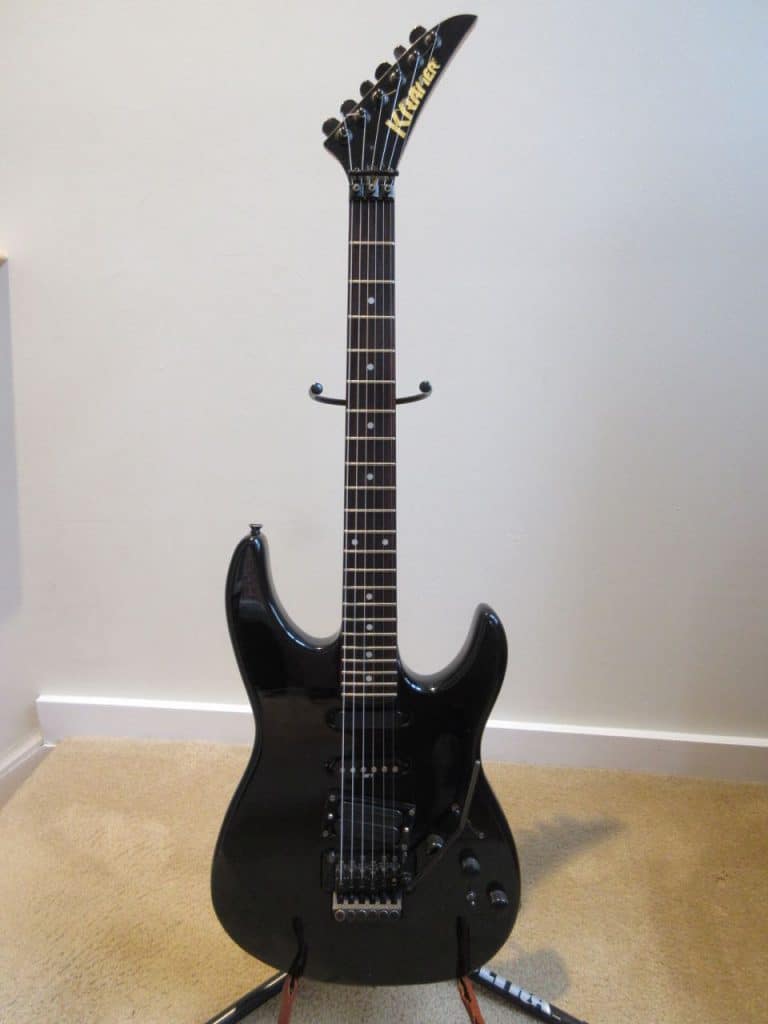
A single-cut and LP-style (Les Paul) guitar has one carved-out area of the body where it meets the neck. This allows you to reach the high frets on the neck. T-style (Telecaster) guitars also have one cutaway area of the body.
An S-style (Stratocaster) and double-cut guitar have two cutaway portions of the guitar body. The body may be symmetrical or nearly so as on the Gibson SG and PRS guitars. Or the upper cutaway may be offset as on S-style guitars.
Pickup Combinations
The guitar pickup is the component under the guitar strings that picks up the string’s vibration and translates it into an electrical signal. This is what’s responsible for the sound of an electric guitar.
You may be familiar with acoustic guitars. Acoustic guitars have a soundhole–the circular hole on the top of the guitar body. This lets the sound of the strings resonate within the body of the acoustic guitar.
Think of electric guitar pickups as the equivalent of an acoustic guitar soundhole. The pickups may look different, but they all do the same thing.
Single Coil Pickups
These are the skinny pickups with a single row of magnetic pole pieces, or a thin-looking smooth piece of metal, depending on the pickup type. They typically produce a brighter sound and don’t have quite as much output as a humbucker.
Both the classic Fender Stratocaster and Telecaster have single-coil pickups.

Humbucker Pickups
Single coils can sometimes be noisy. You might hear a hum from the amplifier even when you’re not playing anything. Humbuckers are designed to buck or eliminate the hum.
They are like two single-coil pickups stacked side by side. Humbuckers look wider and typically have a warmer, darker tone. They also have higher output, making them the top choice for high-gain rock and metal.
The Ibanez RG and Gibson Les Paul feature humbuckers.
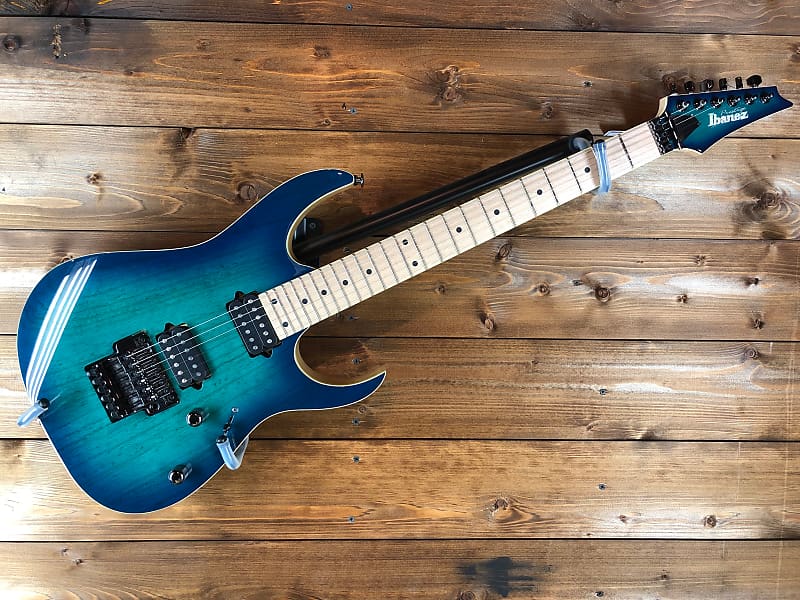
Switches and Knobs (Guitar Controls)
Almost every electric guitar will have a few knobs and switches on the guitar body. These will vary depending on the guitar style. You will have some combination of volume, tone, and pickup selection.
Volume and Tone
The volume knob controls the output of the pickups and increases or decreases the guitar sound. The tone control changes the characteristics of the guitar sound. When you lower the tone control, the sound gets mellower and less bright.
Pickup Selector
The pickup selectors allow you to switch between the different pickups on your guitar. You’ll also be able to combine pickups. Some humbucking pickups can be split, giving you a single-coil sound.
Pickup selector switches are usually a 3-way selector or 5-way selector. These switch between the neck, middle, and bridge pickups and combine the pickups for different tones.
All of the guitar controls are helpful for fine-tuning your sound.
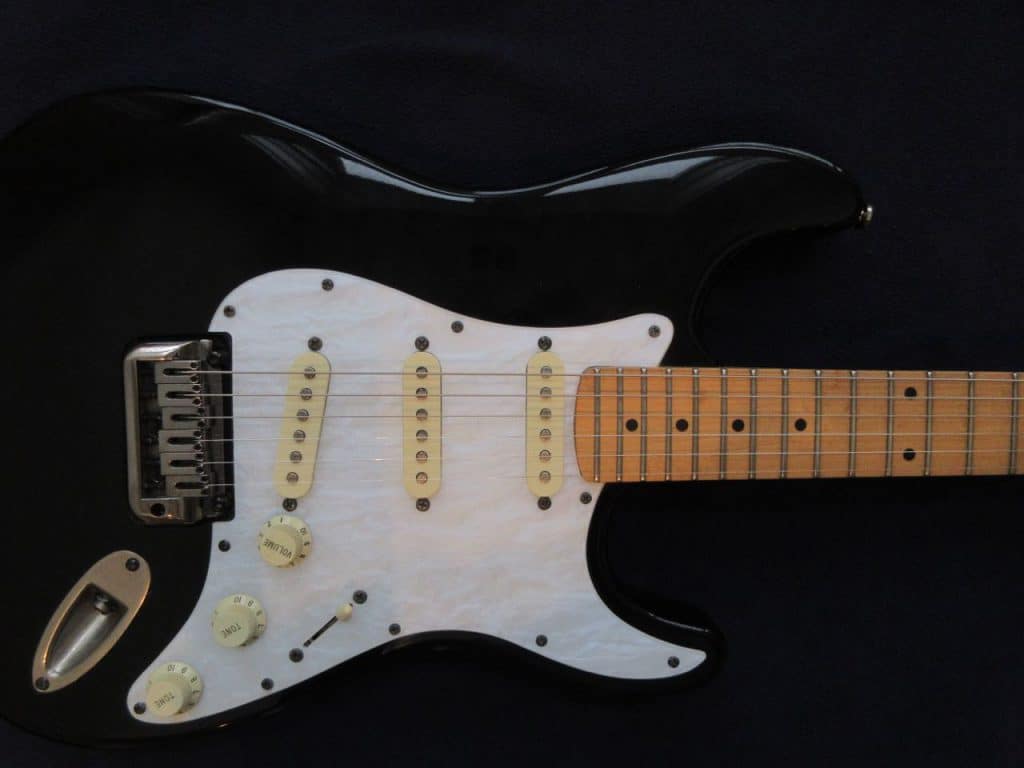
Fixed Bridge and Tremolo
The guitar’s bridge is located toward the end of the guitar body, where the strings end. There are different types of bridges, but you basically have two choices, a fixed bridge or a tremolo system.
Tremolo
With the tremolo, you can add some vibrato to the sound. This means altering the pitch of the note up or down. This can be subtle, or wild and dramatic as in some rock and metal styles.
As a beginner, you won’t need the tremolo immediately; you should probably leave it alone until you gain experience. Guitars with tremolos can experience some tuning issues if not set up correctly.

Fixed Bridge
A fixed bridge means just that. It’s not designed to move. There are no pivot points, so you won’t be able to do any crazy whammy bar effects. The fixed bridge should give you some tuning stability.
Neck Size and Radius
Neck Radius
The radius of the guitar neck refers to how rounded the fingerboard or fretboard is. The fretboard is the top area of the guitar neck where you put your fingers.
For example, a Stratocaster will have a rounder radius of 9.5”. An Ibanez RG will have a flatter radius of 15”. The rounder radius will be comfortable for playing chords, and the flatter radius will help with speed and accuracy when soloing.
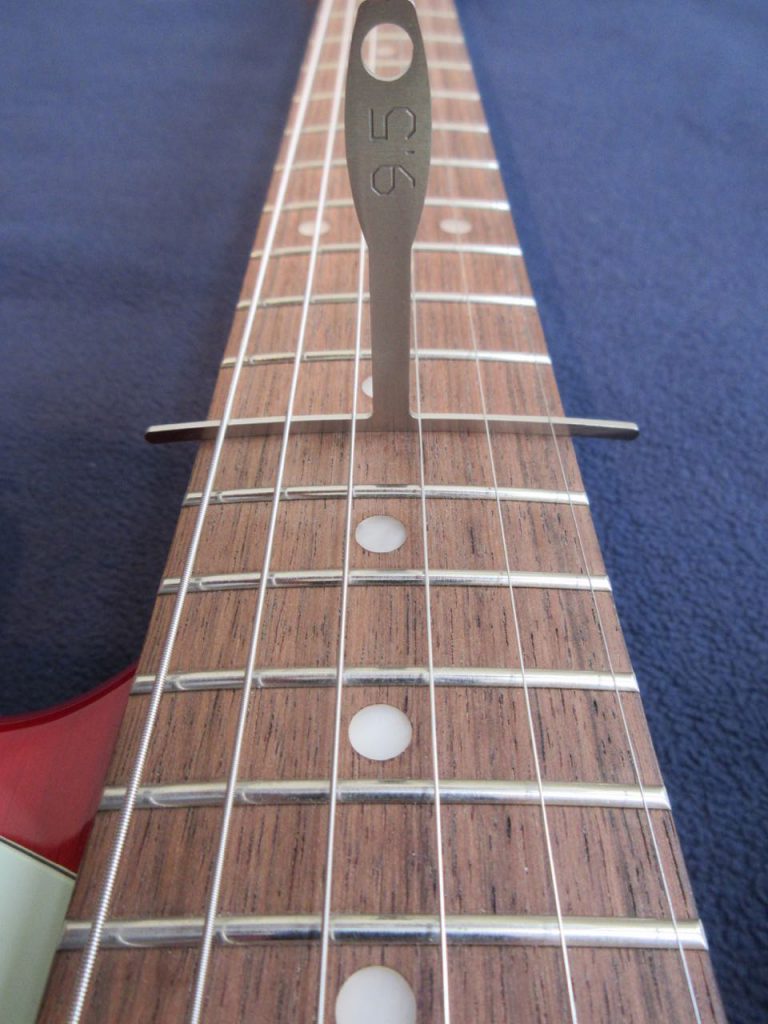
Neck Size and Width
The size and depth of the neck will also vary. For example, an Ibanez will have a thinner neck than a Stratocaster. Some players will find this more comfortable, while others will prefer the thicker Fender neck.
The neck width varies too. The dimensions of the guitar neck contribute to the overall neck shape. If you want to learn more, check out our article on the different guitar neck profile shapes.
This is ultimately a matter of preference. You should try out some different guitars to get a sense of different guitar necks.
Neck shape
Guitar necks have different profiles or shapes. If you think of taking a cross-section of the neck, you’ll see something like the letter “C” or “U”. In fact, some guitar manufacturers use letters to indicate the neck shape. Others will just indicate the thickness.
Don’t worry too much about the various letters or shapes. Just know that the shape and size of the neck will vary depending on the guitar. This may be important to you later as your playing progresses.
Neck attachment
The guitar neck will either be bolted onto the body as in S-style guitars or be glued in the body (set neck) as in LP-style guitars. Some guitars have a neck-through construction, meaning the neck extends through the length of the body.
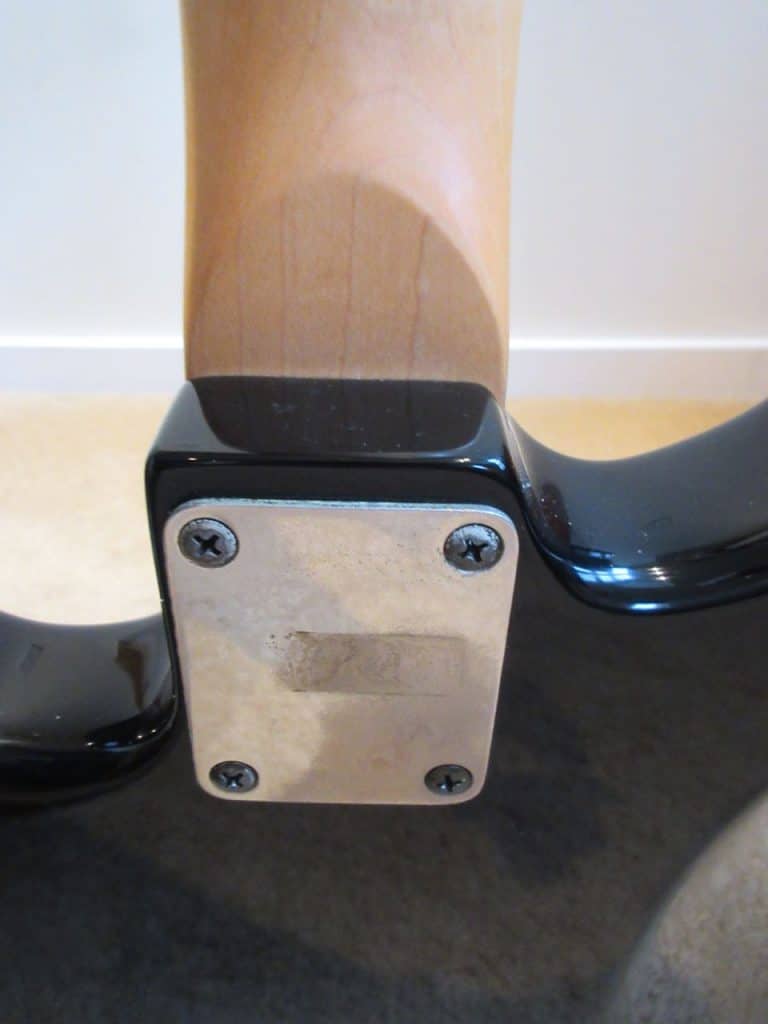
Scale length
The guitar’s scale length is basically how long the guitar strings are between the nut and the bridge saddles. There are a couple of different standard scale lengths. Most Strats are 25.5” scale length, while the standard Gibson scale length is shorter at 24.75”.
Frets
The guitar frets are the segments of metal wire in the fingerboard. You’ll press down on the guitar string near a fret to make a particular tone. The frets on a guitar are essential for producing the different notes of the musical scale (though not every stringed instrument has frets).
Fretwire comes in different thicknesses. You’ll see narrow, medium, medium jumbo, and jumbo used to describe frets. Learn more about different fretwire sizes in our electric guitar anatomy post.
You may prefer one particular fret size over another. You will get a feel for this as you try out different guitars and progress in your playing.
Tuning Hardware
The tuning machines on your guitar are an essential piece of hardware. At lower price points, the tuning keys are not always the best quality. Thankfully, you can replace these relatively easily later on.
On more expensive guitars, you’ll find locking tuners. These make stringing the instrument easier and can help with tuning issues.
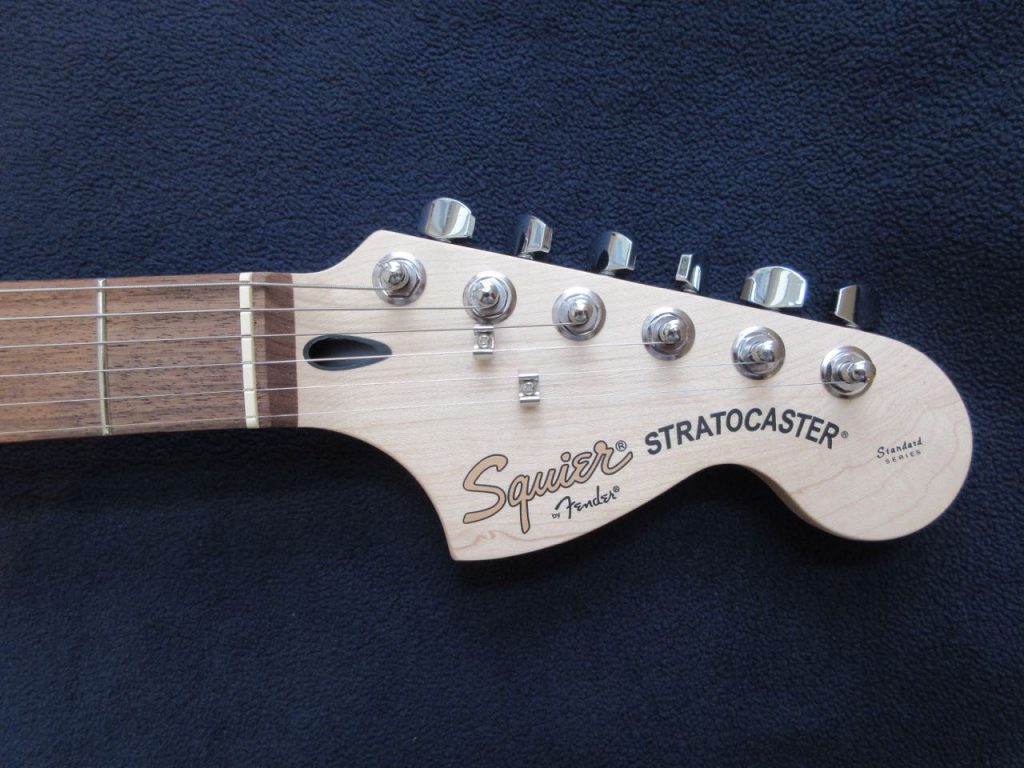
Strings
The guitar strings are made out of metal and come in different thicknesses. Often guitars will come with a lower gauge string, .009 through .042.
These numbers refer to the thickness of the string. You can use thinner and thicker strings, depending on your preferences. Starting out with .009 is recommended. It will be easier on your fingers!
Type of Wood
The guitar body and neck are made from different types of woods, such as basswood, alder, ash, poplar, maple, mahogany, and others.
The type of wood does influence the guitar’s tone. However, your pickups and amplifier are primarily responsible for your guitar tone.
As a beginner, don’t worry too much about the type of wood used for the guitar body. It’s not going to make much difference to you at this stage.
Type of Fretboard
You’ll also see two different types of fretboards, loosely speaking. There is a lighter color fretboard, typically maple, and a darker fretboard, typically rosewood. Newer alternative woods are being used instead of rosewood, such as pau ferro.
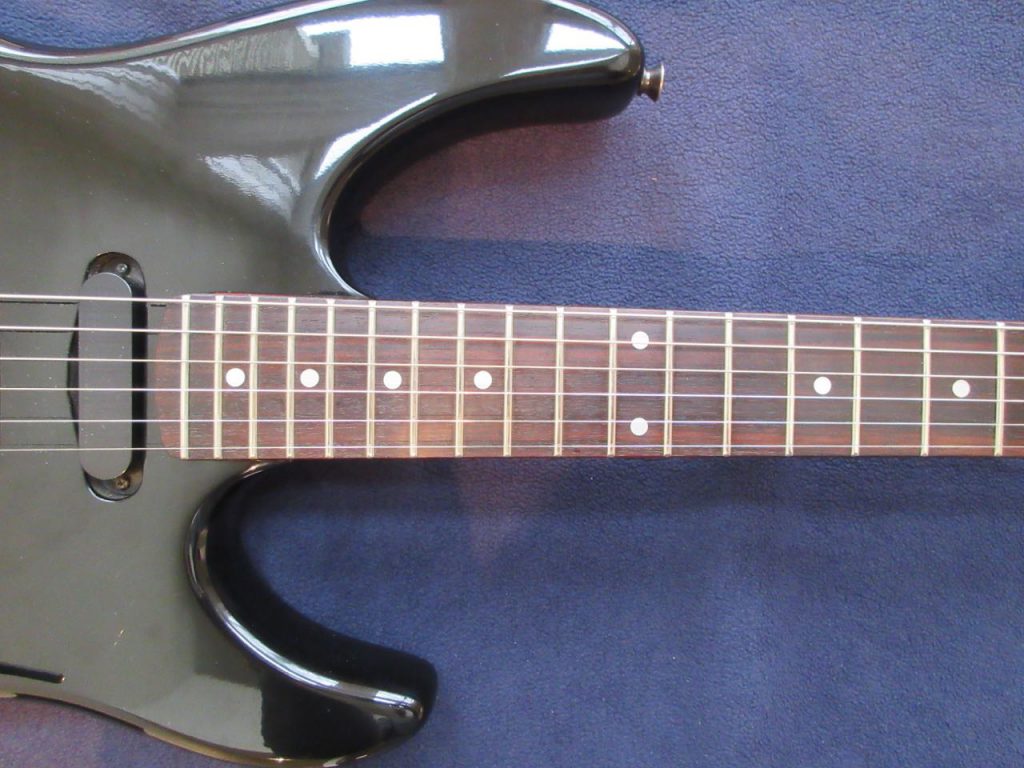
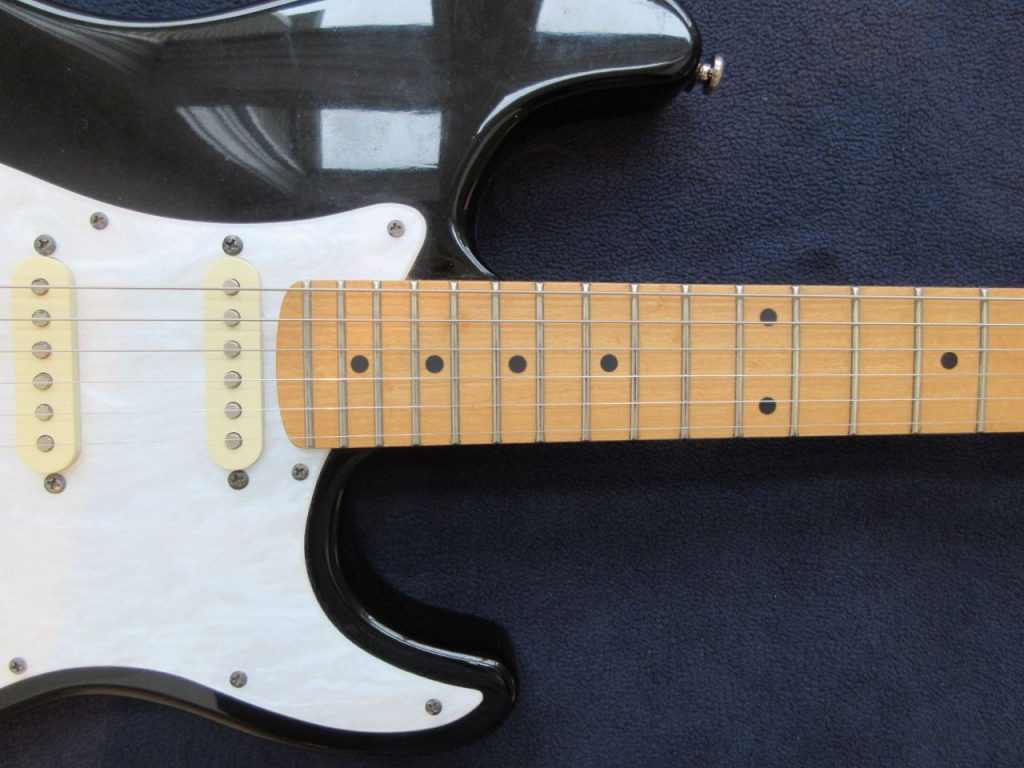
The maple fretboard may produce a slightly brighter sound, and rosewood a darker, mellower tone. However, as with the body wood, don’t worry too much about it at this stage. Pick a guitar that you like to play above all else.
Conclusion
Buying your first electric guitar may seem overwhelming when you look at all the options. You have a large variety to choose from in a lower (or any) price range.
Our recommendation is to visit your local music store and try out a few guitars. You will get a sense of what feels good in your hands and what looks good to you.
We recommend a guitar in the $199 to $299 price range for a beginning player. You can find a quality instrument at this cost. If you spend a little more, you will upgrade the hardware, electronics, wood, and finish.
Be sure to see our list of best electric guitars for beginners, and best guitars under $300.



